A currrent I is passed through a silver strip of width d and area of cross section A. The number of free electrons per unit volume is n. (a) Find the drift velocity v of the electrons. (b) If a magnetic field B exists in the region as shown in what is the average magnetic force on the free electrons? (c) Due to the magnetic force, the free electrons get accumulated on one side of the conductor along its length. This produces a transverse electric field in the conductor which opposes the magnetic force on the electrons. Find the magnitude of the electric field which will be the potential diference developed across the width of the conductor due to the electron- accumulation? The appearance of a transverse emf, when a current-carrying wire is placed in a magnetic field, is called hall effect.
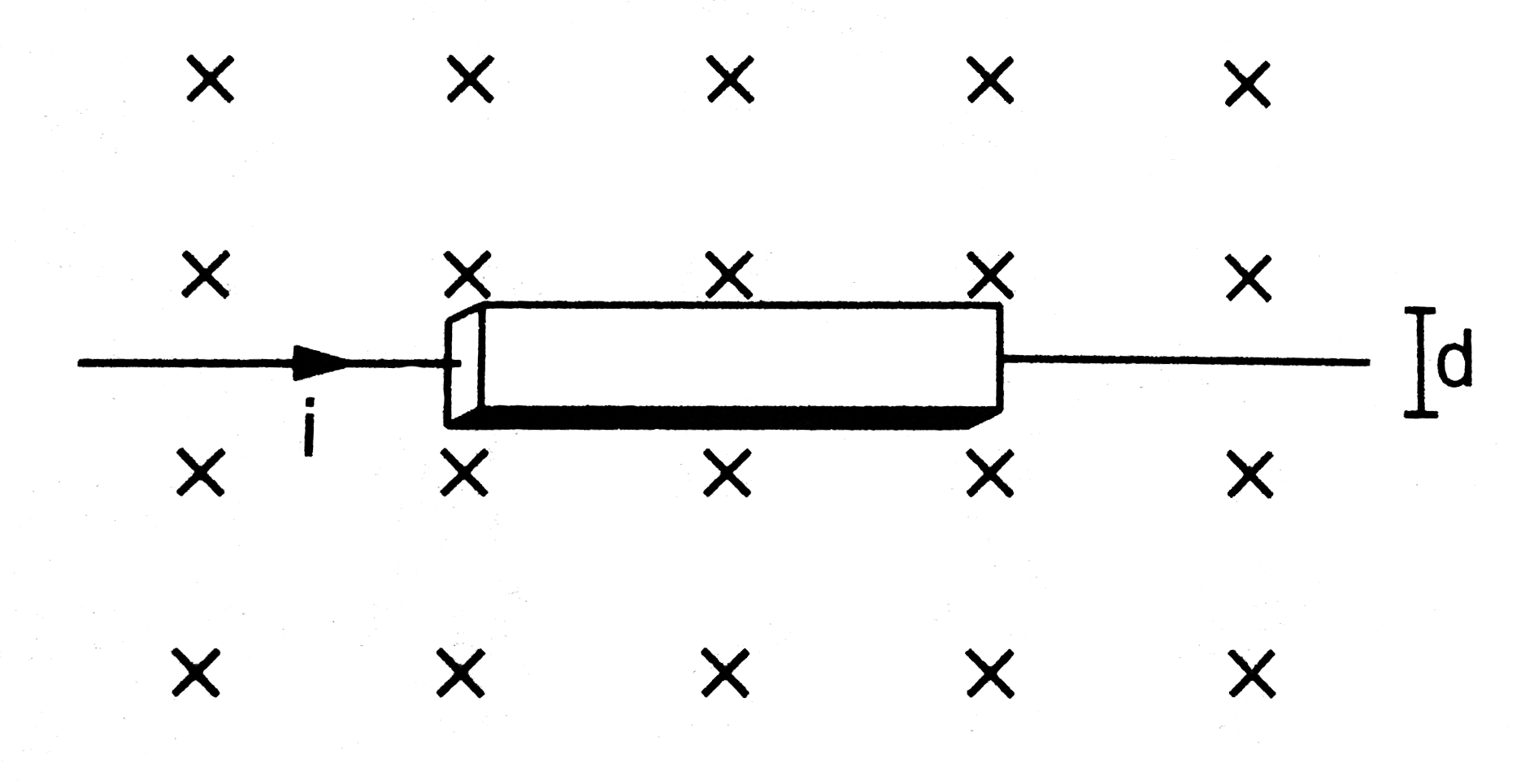
(a) i = V_(a)pi Ap <br>where V_(d) = drift velocity of electron,
n = number of electron.
Vd=1nAp
(b)F=p.(Vd×B)
=p.1nApB=iBAn
*( c ) Let the electric field = E .
eE=F=iBAn
orE=iBeAn
( d ) dV = Edr<br> V = (iBd) /(eAn) .
Topper's Solved these Questions
Similar Questions
A current I is passed through a silver strip of width d and area of cross-section A. The number of free electrons per unit volume is n
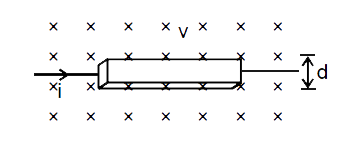
Find the drift velocity v of the electrons.
View SolutionA current I is passed through a silver strip of width d and area of cross-section A. The number of free electrons per unit volume is n
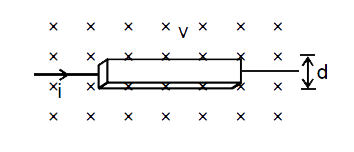
What will be the potential difference developed across the width of the conductor due to the electron accumulation? The appearance of the transverse emf, when a current - carrying wire is placed in a magnetic field, is called Hall effect.
View Solution
Knowledge Check
There is a current of 40 A in a wire 10−6m2 area of cross-section. If the number of free electrons per cubic metre is 1029, then the drift velocity is :
A250×10−3m/secB25.0×10−3m/secC2.50×10−3m/secD1.25×10−3m/secThere is a current of 40 ampere in a wire of 10−6m2 are of cross-section. If the number of free electron per m3 is 1029 then the drift velocity will be
A1.25×103 m/sB2.5×10−3 m/sC25×10−3 m/sD25×103 m/sThere is a current of 40 ampere in a wire of 10−6m2 are of cross-section. If the number of free electron per m3 is 1029 then the drift velocity will be
A1.25×103m/sB2.50×10−3m/sC25.0×10−3m/sD250×10−3m/s
A current I is passed through a silver strip of width d and area of cross-section A. The number of free electrons per unit volume is n
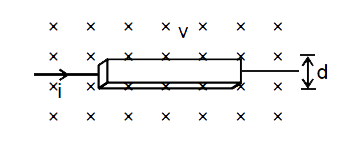
Due to the magnetic force, the free electrons get accumulated on one side of the conductor along its length. This produces a transverse electric field in the conductor which opposes the magnetic force on the electrons. Find the magnitude of the electric field which will stop further accumulation of electrons.
View SolutionA current I is passed through a silver strip of width d and area of cross-section A. The number of free electrons per unit volume is n
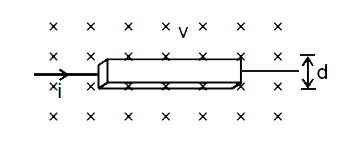
If a magnetic field B exists in the region as shown in figure, what is the average magnetic force on the free electrons?
View SolutionAn electron moves with velocity →v=ak In a magnetic field of intensity →B=bˆi+cˆj . Find the magnetic force on the electron.
View SolutionA conductor of length of l and area of cross section A has n number of electrons per unit volume of the conductor. The total charge carried by the conductor is
View SolutionThere is a current of 20 amperes in a copper wire of 10−6 square metre area of cross-section. If the number of free electrons per cubic metre is 1029 then the drift velocity is
View Solution
